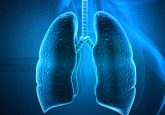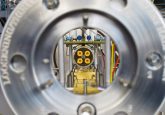Pediatric breath analysis for sepsis detection
Measuring 13C isotope levels in the breath of pediatric patients could give an early indication of sepsis.
Daniel Bütz and colleagues at the University of Wisconsin-Madison (WI, USA) are carrying out a study to detect sepsis by measuring 13C isotope levels in the breath of pediatric patients. Existing diagnostic tests for sepsis either lack sensitivity for early detection or are expensive and invasive; this type of breath test could save lives by giving an early indication of the condition, while also being less invasive for the patient.
The researchers state, “Breath-based markers, such as the carbon isotope breath delta value (BDV), may serve as better infection surveillance tools since they can be easily and non-invasively monitored.” They go on to explain the purpose of this initial study, “The purpose of this observational pilot study was to determine the baseline variability of exhaled BDVs in a population of mechanically ventilated pediatric patients and to correlate the trends in BDV over time with the severity of inflammation and clinical course.”
The BDV measurement works in the following way: a lipid’s isotopic signature is lighter than other macronutrients, meaning that if more lipids are metabolized then more 12C would be present in the exhaled CO2. However, in the case of sepsis, less lipid oxidation occurs and as such the 13CO2:12CO2 ratio increases.
The group of researchers measured CO2 breath ratios every 8 hours for 72 hours in 17 mechanically ventilated pediatric patients. They were able to correlate the BDV (13CO2:12CO2) breath ratio with the severity of their systemic inflammation, specifically their acute phase response.
Source: Boriosi JP, Maki DG, Yngsdal-Krenzet RA et al. Changes in breath carbon isotope composition as a potential biomarker of inflammatory acute phase response in mechanically ventilated pediatric patients. J. Anal. At. Spectrom. doi: 10.1039/c3ja50331c (2014) (Epub ahead of print).






